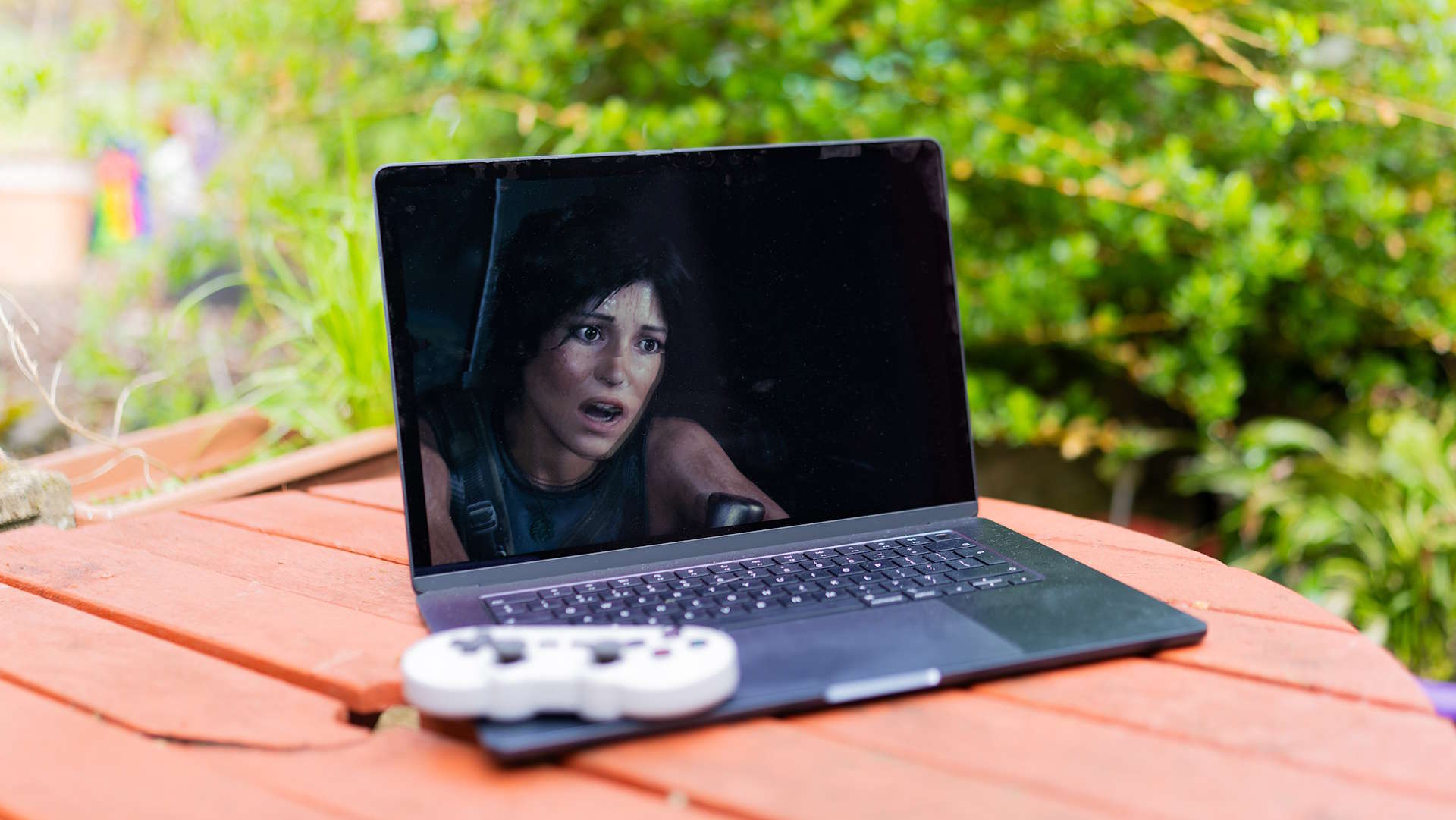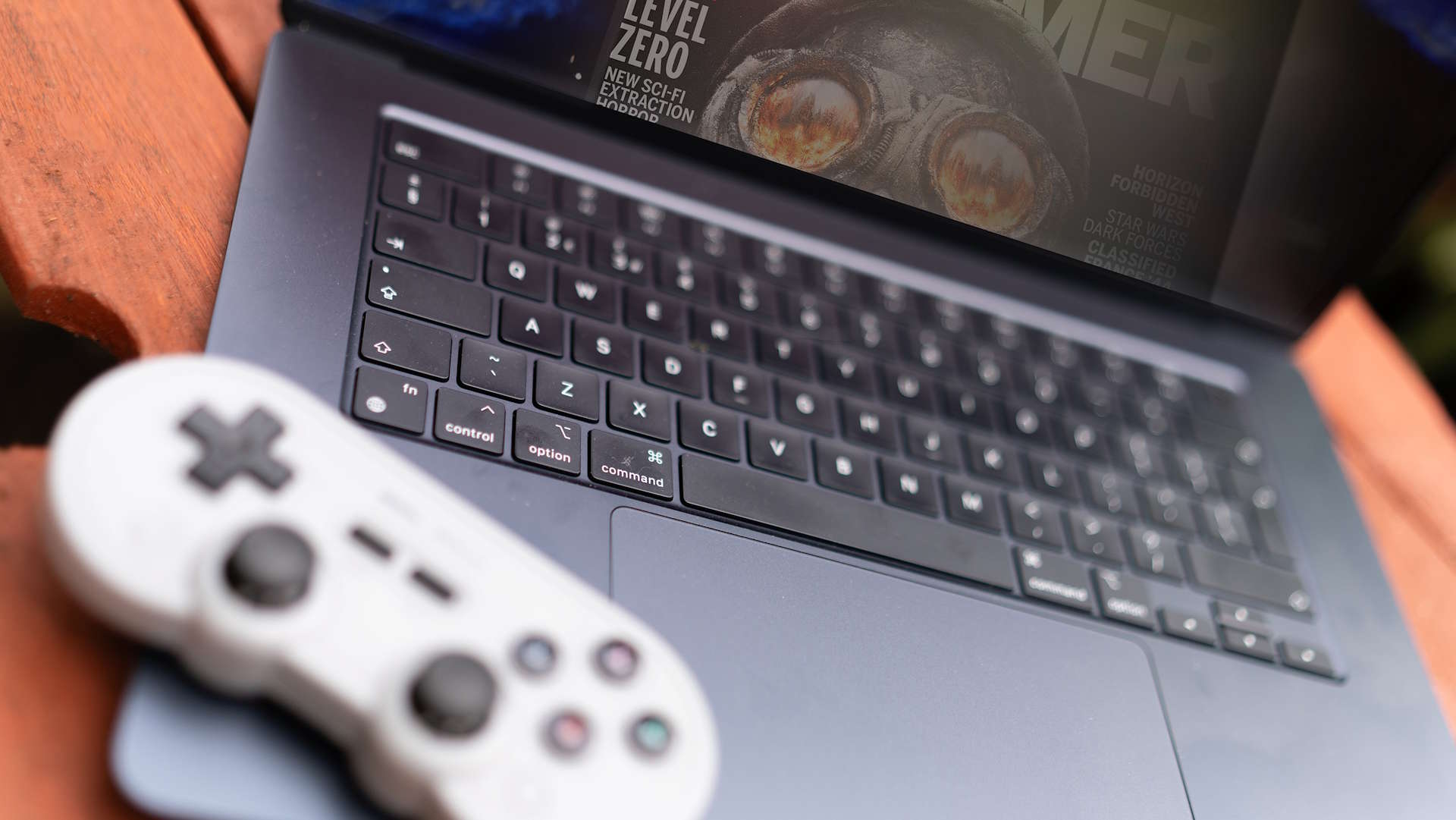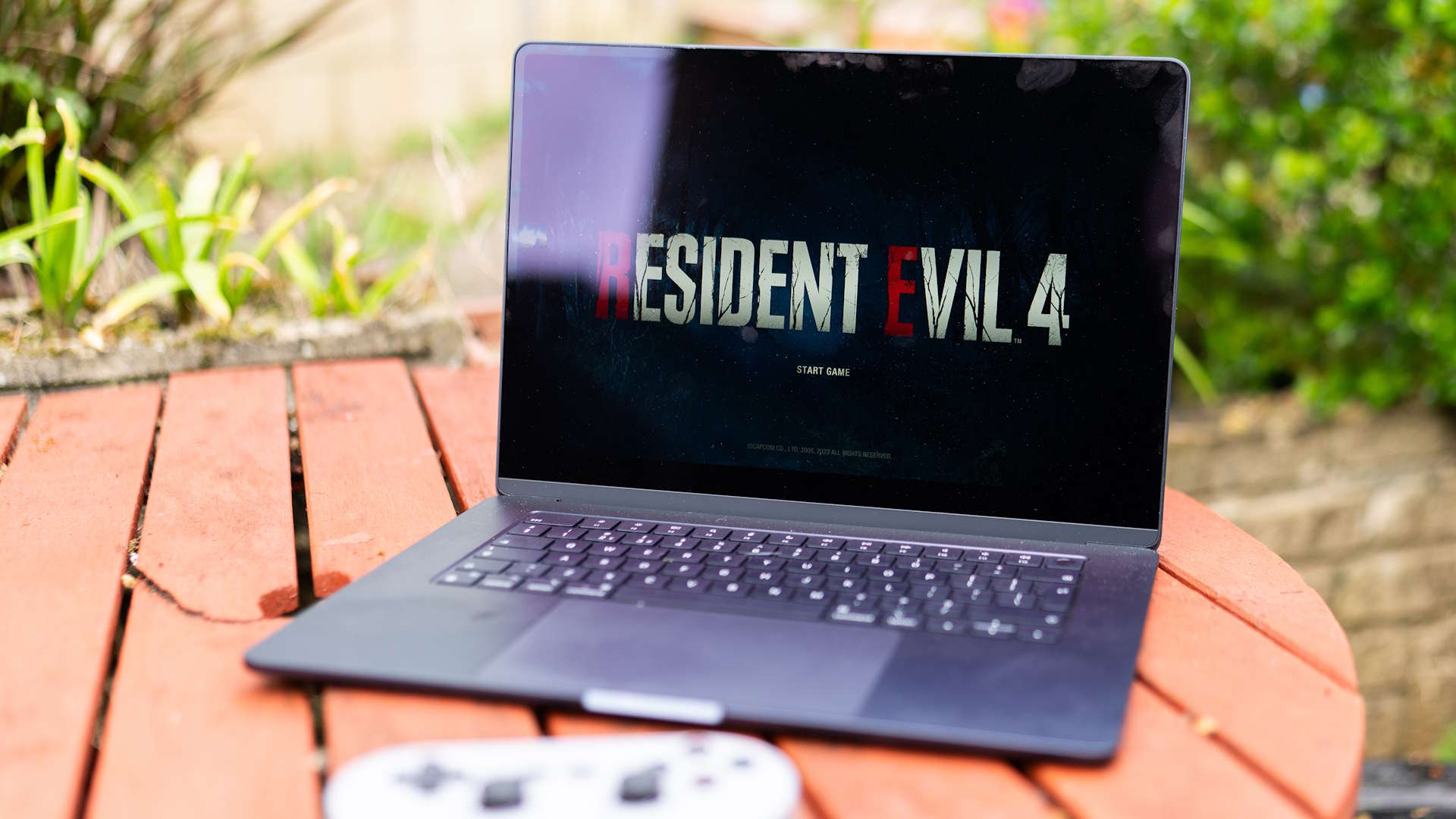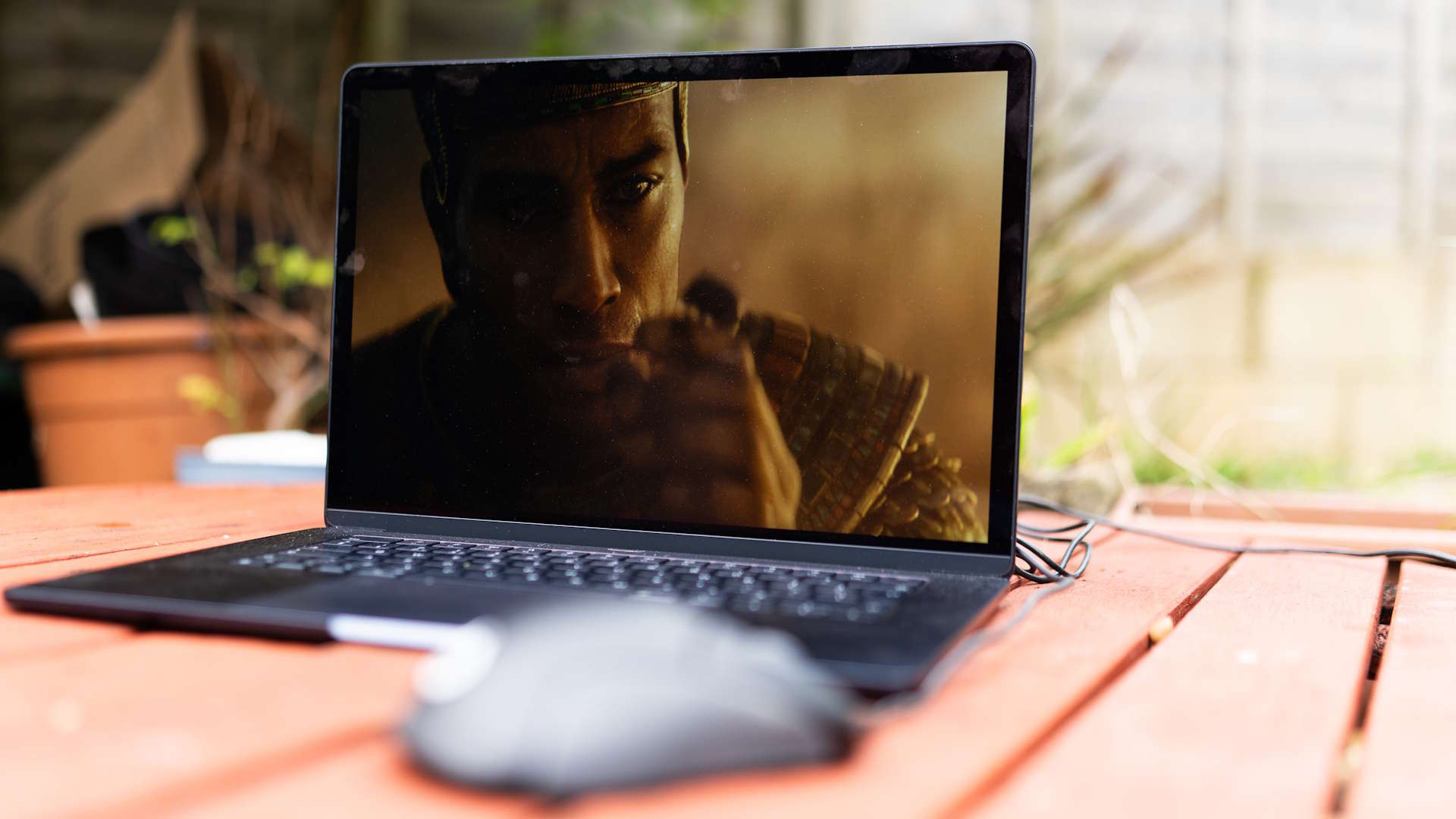ARM-based processors are coming for traditional PC gaming so we've tested Apple's ARM-y MacBook silicon to see how well it plays games in 2024
It's Mac gaming in the era of the M3.

We've all incurred the wrath of the IT department of a major UK newspaper group subsidiary by organising games of Cro Mag Rally over a network of Apple G4 Cubes while we were supposed to be working, haven't we? Just me? Okay. Mac gaming is definitely not as popular as the PC variety, but it still hangs on. It almost looked at one point, when early Xbox 360 devkits were presented as Apple G5 towers, that the Mac might even be in for a gaming renaissance, but it never came to pass.
Macs ran on Intel chips for a long time, but since the switch to Apple's own adapted ARM designs, the M-series, playing games on them has faced a further challenge: It's not just the operating system that's different to Windows, but the underlying architecture differs from PCs, too.
Games either need to be compiled for ARM to run natively, or go through a software translation layer that affects performance. If you've got some games or apps already compiled to run on an Intel Mac, then they'll run through Apple's Rosetta II layer, which works quite well.
If you've got Windows games, then they can run through a translation layer like WINE, for which a couple of frontends are available. One is called Whisky, which is free and open-source, and another is Crossover, which demands a fee (though there's a free trial) and adds things like Battle.net support and automated installation.
There's also Parallels, which runs a Windows virtual machine on your Mac, but it's the version of Windows 11 for ARM processors, so you'll still run into compatibility problems as well as the performance drop from being a VM.
I got my hands on an M3-powered MacBook Air, the latest though not greatest at the time of writing, to see what works and what doesn't in the world of Mac gaming in 2024. Good news! There's a Mac version of Steam. Better news! It can filter out the games in your library that won't work! Even better! Baldur's Gate 3 and Stardew Valley are compatible. Bad news! The Witcher 3 isn't.


The list of working games is a small one compared to a standard x86 PC, however, and the performance of the M3 lags behind a gaming rig with a discrete GPU card. Even benchmarks on Mac can be hard to come by. The less-gamey ones, such as Cinebench and Geekbench, work fine (and put the M3 up there with the i7s of this world, especially in single-core performance), but when the games PC Gamer traditionally uses to test a Windows PC aren't available on your operating system, what are you to do? Improvise.
Keep up to date with the most important stories and the best deals, as picked by the PC Gamer team.
The 3DMark suite of tests appears as compatible on Steam, but throws an error at launch. The iOS version of the app is available on the App Store, however, and it can run the Wild Life Extreme benchmark. The M3 Mac manages an average frame rate of almost 50 fps, which the app says is better than 98% of all devices. It looks like a good start until you remember that this is a benchmark aimed at mobile devices, and that when you run it on a PC an RTX 3060 doubles the M3's score.
So, not actually that amazing after all, though does demonstrate the potential power of the silicon when you throw it up against the scores Qualcomm is promising for its Snapdragon chips and what Intel and AMD chips get in current handhelds.
But the ability to run iOS apps, some of which give an excellent, console-like gaming experience on devices like the iPad Pro, would seem to mark the MacBook out as something that could be used to play these on a bigger screen. And, to an extent, that's true. Games like Baldur's Gate II Enhanced Edition run very nicely on the M3 chip, though not full screen as they're tied to the aspect ratio of the tablet, but when you get to more recent releases there can be a problem.

It seems there's a switch that publishers need to flick to make their iOS games available to be downloaded on the Mac App Store (and it's probably a little more complicated than that), but many haven't done it. Hitman Blood Money: Reprisal, Pillars of Eternity, and WH40K Mechanicus just don't appear in the App Store for Mac, even though I have them installed on my iPad. I can play Planescape Torment, which is obviously brilliant, but I'm not keen on paying two grand for a laptop just to play games from 1999. The Delta emulator that's been top of the App Store charts since Apple softened its stance on such apps will install on the Mac, however.
Apple has improved the GPU in the M3 over the M2, which should make it a better fit for gaming. It has gained some cores and support for mesh shading and ray tracing, but we're still in integrated graphics territory. There is some spark of life, however. Firing up Metro Exodus shows no sign of ray tracing, but it does run in 1080p at medium settings (though attempting to change this to high caused the game to lock up and it had to be forced to quit).
In the flamethrower-heavy Two Colonels DLC there are plenty of fire effects and giant worms to deal with, and using macOS Sonoma's built-in tools (the Steam frame counter refuses to work) it's possible to watch the frame rate wander between around 30 and 50 fps as the worms get roasted. It's not too bad for a console-quality experience.
In Resident Evil 4, installed from the Mac App Store, 60 fps is possible with high texture quality at 1080p, though there's a weird shimmer to some textures, especially Leon's hair, which I put down to the MetalFX upscaling. A frame rate in the 50s is more common, but the game has some of the best controller support I've come across, with multiple button layouts for Xbox, PlayStation and other controllers.

I'd failed to get an Xbox controller to pair with the Mac, so was using an 8bitDo pad with a Nintendo-style layout, and it was nice to see this reflected in the game instead of relying on muscle memory that the X a game wanted me to press was in fact Y. It does, however, take a little work in the settings to get it into fullscreen mode on an external monitor, and the game refuses to even run without iCloud Drive enabled for its save files.
Meanwhile, back on Steam in Feral Interactive's port of Shadow of the Tomb Raider, 1080p high settings are completely playable, hovering around 35-45 fps in the busy Cozumel section, which remained consistent once the game progressed to jungle areas, though there was some camera judder as it panned across the crowds.
In Metro, I set the game to use 6GB of VRAM, but SOTTR pushed up into 8GB territory. Apple's chips use a unified memory architecture, and the M3 Air has 16GB to share between its various processors, so letting the GPU grab half leaves a respectable amount left over for the CPU, though more is always better.
Feral has also ported many Total War games to Mac, and the latest, Pharaoh, became available last year. Its recommended graphics settings put it at 900p and a mysterious ‘custom' quality, but I changed this to 1080p and medium to get 100 fps in the battle tutorial scene. Changing this to high quality dropped the frame rate to the neighbourhood of 45 fps, and while the plain desert environment probably had something to do with this excellent performance it bodes well for the rest of the game.


In the city of Baldur's Gate, renowned for causing frame rates to dip even on desktop PCs, BG3 once again defaulted to 900p and medium settings—Steam Deck quality, essentially—but I jacked this up to 1080p, though still at medium. There seems to be a slight problem with load times—the M3 Air's SSD posts a transfer speed of around 3,000Mbps, which isn't as fast as the latest PCIe 4.0 drives but is hardly SATA hard drive territory—with characters remaining in T-poses longer than expected, and an overall frame rate sitting around 20-30 fps suggests I should have left it at the lower resolution.
Gaming on Mac in 2024, then, isn't a complete bust, and the M3 actually does very well for a chip with integrated graphics. The ARM architecture is coming to PC later this year with Snapdragon chips from Qualcomm, and it's unlikely to be the only company offering them in the long term. And the more options there are running this kind of non-x86 silicon the more emphasis there will be on game developers to actually spend some resources making them work.
While it's impossible to recommend buying a Mac purely for gaming purposes right now, if you've got one for graphic design, architecture, or just showing off in coffee shops, then it has got the guts to provide a reasonable portable experience, even if the software availability still leaves a bit to be desired.

Ian Evenden has been doing this for far too long and should know better. The first issue of PC Gamer he read was probably issue 15, though it's a bit hazy, and there's nothing he doesn't know about tweaking interrupt requests for running Syndicate. He's worked for PC Format, Maximum PC, Edge, Creative Bloq, Gamesmaster, and anyone who'll have him. In his spare time he grows vegetables of prodigious size.

